A Painter’s Last Works Resurface in New York
The brilliant late career of Jay DeFeo. Plus, America's forgotten painter, solitude on film, and more.
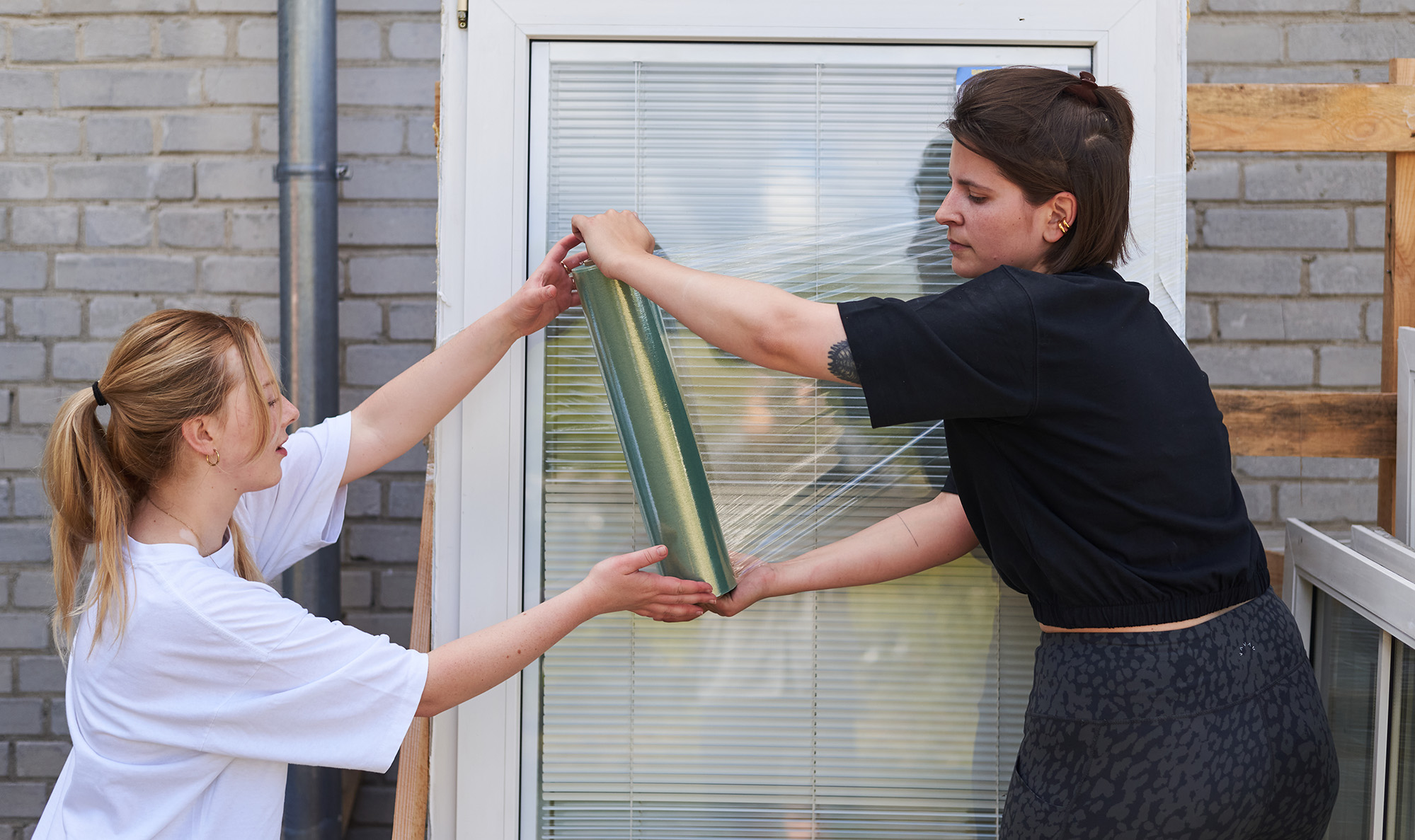
On this special episode, Dan speaks with designers and curators dealing with the many facets of Russia’s invasion of Ukraine: from Max Gorbatskyi and Viktoria Bavykina, who conceived “Net Making,” the country’s pavilion at the recent Art Biennale in Venice, to Sasha Topolnytska, who co-curated the summer exhibition “Constructing Hope: Ukraine” at New York’s Center for Architecture, and designing couple Victoria Karieva and Andrii Anisimov of the Kyiv-based interiors firm Between the Walls, who are building a business amid rolling blackouts and satellite internet.
TRANSCRIPT
Andrii Anisimov: When the wars broke out, we faced enormous amount of problems and we had an option to break down, give up, and the second option, okay, what can we do to save, first of all, our country? And what can we do to save our studio? Our people and our team is greatest weapon.
Dan Rubinstein: Hi, I’m Dan Rubinstein, and this is The Grand Tourist. I’ve been a design journalist for more than 20 years and this is my personalized guided tour through the worlds of fashion, art, architecture, food, and travel, all the elements of a well-lived life. On today’s episode, as you may have realized by now, we’re taking a moment to appreciate that not everyone in the worlds of art, design, and culture have the privilege of that well-lived life at the moment. For some, art and design can be matters of life and death, hope and resilience.
Since the full-scale Russian invasion of Ukraine, our TV sets and news feeds have been filled with stories of a plucky country fighting against a behemoth five times its size as a matter of sheer survival, and refugees have spread out around the globe while others have stayed to fight or to persevere. On today’s episode, I’m going to meet five incredible individuals from the worlds of art and design who are each confronting the realities of war in their own way.
We’ll meet a young couple building a progressive design business amidst rolling blackouts and satellite internet, and a New York-based curator who is bringing to light the many creative and Herculean efforts her compatriots back home are achieving to resist and rebuild. But first, I chat with the curating couple, Max Gorbatskyi and Viktoria Bavykina, a young Ukrainian couple currently based in Liverpool, and they’re hot off the heels of curating Net Making, the Ukrainian Pavilion at the recent Venice Art Biennale. The pair also founded a platform called Ukrainian Photographies, which collects research on the art form from Ukraine.
For Net Making, an oval-shaped gallery was created using low-cost camouflage that would be a familiar site to most Ukrainians today. In this space, they highlight various works by Ukrainian artists, including video works documenting the struggles of everyday people, as well as Best Wishes, a photographic work, documenting neurodivergent artists coping with the war. I caught up with Max and Viktoria from their home in Liverpool.
And so how did both of you wind up coming together and living in Liverpool? Tell me about that story of yourselves.
Max Gorbatskyi: We moved together from Ukraine to London in September, October 2021. The plan was maybe we stay for one year because I got the Chevening Scholarship to study. And then we stayed in London for two years and then we moved to Liverpool a year ago.
Okay. And so was that because of the job that you have in Liverpool?
MG: Moving to Liverpool, yes. I’m a curator at Open Eye Gallery here, and Viktoria is doing an MA in University of Liverpool.
Okay. So how would you describe life in Liverpool to your friends back in Ukraine?
Viktoria Bavykina: Rainy and no sun.
Rainy and no sun, okay. For a Ukrainian, no, that sounds true. That sounds very true. And so have you found the arts community in Liverpool to be welcoming?
MG: I think we have. Yeah, so we work with Open Eye Gallery, both of us, and Open Eye is a part of Liverpool art scene, very active part, so we often get in touch with people from other galleries or museums. And yeah, I think Liverpool is not such a big city, but the cultural scene is quite big and active, so it’s easy and interesting to be in the art community here because of its more compact size, but activity.
I’m sure everybody knows each other or at least-
MG: Heard about.
Yeah, compared maybe to London. And where are you guys from in Ukraine originally?
VB: I’m from Kharkiv.
MG: And I’m from Kryvyi Rih, but we met in Kiev and lived in Kiev.
You guys founded Ukrainian Photographies, which is this organization, and I was wondering if you could tell me a little bit about that and how that started.
MG: We founded it in spring/summer 2022, shortly after the full scale invasion, because we started to think what we can do being in the UK, being in London, so maybe we can try and use our contacts and network to invite the researchers, curators, art historians to write and engage with Ukrainian culture, especially photography. So it’s not becoming something when we just talk about ourselves, but the way around we try to involve international cultural professionals and community to write and research Ukrainian photography. And that was basically the idea.
And obviously, being chosen for the first Ukrainian Pavilion is quite the honor. How did that come about and did you apply? How did that happen?
VB: Yeah, we applied. In Ukraine, we have the system of open call and in Ukraine, the commissioner of the Pavilion is a ministry of culture, and every two years they announce open call and board commission from different Ukrainian curators, researchers, and previous curators of the Ukrainian Pavilion, they just choose from the applications. But it’s quite difficult to be in this process because you have just one month, because this open call, it’s only during one month, but for this one month you need to prepare everything, the budget, the artistic works, architecture, design, everything, so you need already have quite a finalized project.
Wow. So you basically had to do the entire work before you knew you were even being chosen?
VB: Yeah. So it could be really frustrating because you need to do all this work and to prepare everything, and already live with this project together during one month, but then you never know will you choose or not.
So Max, when you guys sat down and decided okay, we’re going to do this, we’re going to apply, what did you guys talk about? What kind of statement did you want to make?
MG: I think we started from asking ourselves the question what would be the most relevant approach in this particular moment in time and particular situation? Of course, Ukraine being attacked by Russia. And we started to think in a sense, what would be the general framework of our project? What would be the general message? And who might be the artist we work with? Because we thought that we probably need to do a group project, we had this idea since the very beginning, because Ukrainian society and Ukraine as a country can be characterized now as many different initiatives which people build themselves, so how they get together in order to confront the enemy. So we thought that group project and involvement of communities probably should be the thing we need to concentrate on to focus.
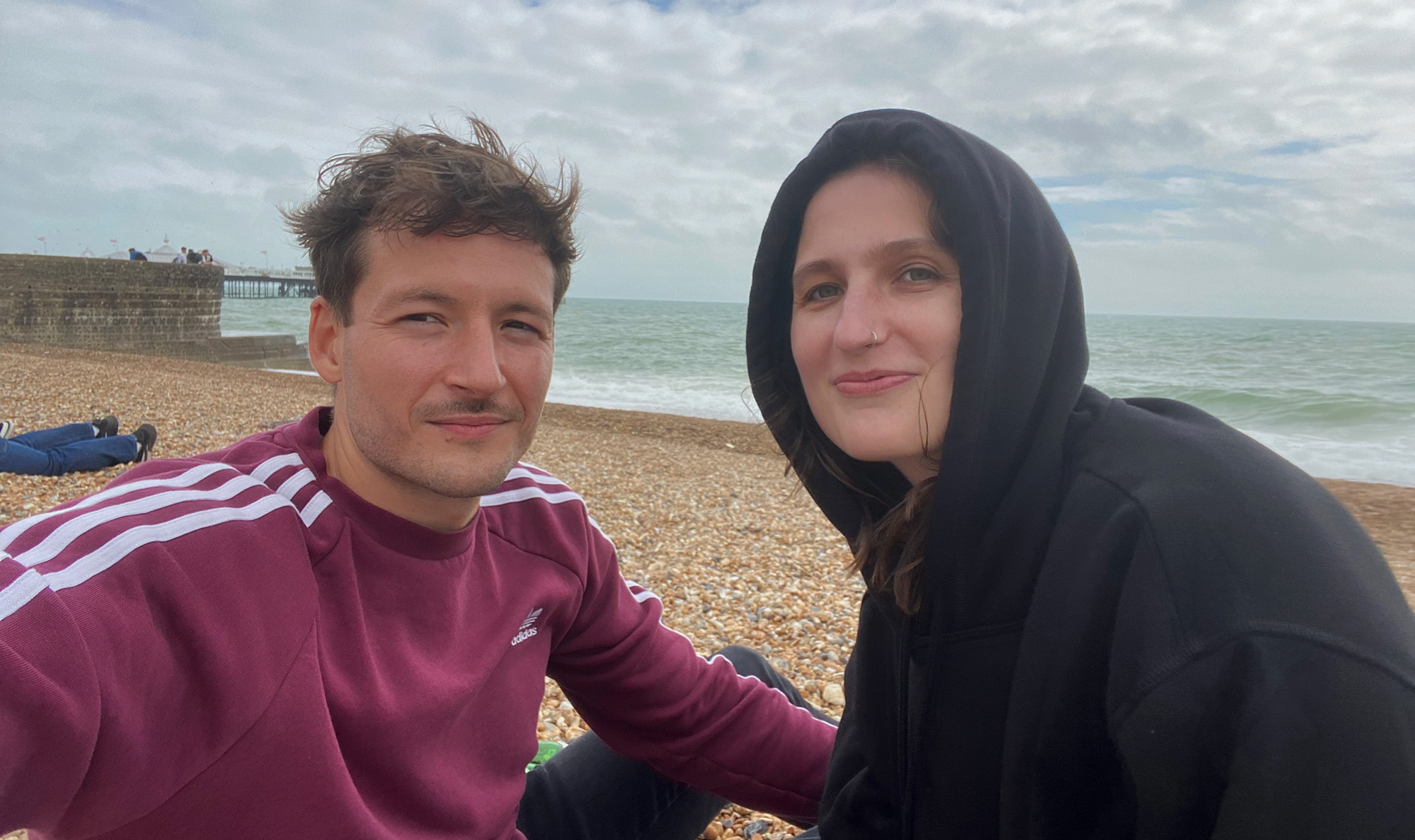
And so tell me about the theme of the show, Net Making. How did that come about? Tell me about the theme and what it means.
MG: Net Making refers to the very widespread practice of weaving of camouflage nets, which is when people get together and they weave camouflage nets because there’s a lack of these kind of things at the front line. It started in 2014 because when Ukraine first was attacked by Russia in 21st century, no-one probably expected such a large scale military campaign, so the country wasn’t just really ready for it. So some things were just missing, and camouflage nets were among those things, so people just realize they need to make groups and to try do them themselves.
But since 2022, since the full scale invasion, this practice become even maybe more popular, and not only in Ukraine, but also among the communities of Ukrainians based outside Ukraine or displaced Ukrainians, because it’s not only something practical, it also can be a way to socialize, a way to be in a group, to have this sense of belonging, to have the sense of being useful for your country. So we found in this practice, probably the most suitable in our vision, at least, metaphor for the modern Ukrainian society, so we wanted to go with this quite straightforward and simple metaphor, and the same title, so net-making or [Ukrainian 00:10:00] in Ukrainian. All Ukrainians perfectly understand what it’s about. Now, we first realized that we need to really explain what does it mean, and what does it mean for people and why? Because you get biased because in Ukraine, when you say net-making or something like that, people immediately understand what you’re talking about.
It sounds a little bit like quilt making, which is an American custom in the south of women coming together and making quilts together or blankets together with pieces of scraps and things like that. Viktoria, tell me a little bit about, from an architectural point of view, there’s an installation that is built on that theme of the war of have found materials that embodied the whole exhibition. Tell me about that.
VB: The beginning of this architectural structure was needs. We need to somehow work with this place because the place for Ukrainian Pavilion, it’s really difficult and it’s not the best place for exhibition because it has a lot of restrictions. You have these four or five exits and you cannot touch anything, like roof, walls.
It’s a historic space.
VB: It’s historic space and it not well researched yet. So even Biennale teams, they don’t know what we’re allowed to do with them or not, so it’s better just don’t touch anything. And our architect and our artist, at the same time, Oleksandr Burlaka, he just start to think what it could be, and he thought that the best way, it’s to create a self-standing structure that will be really independent. And, of course, the first thought was to use some real camouflage nets, maybe that we could create with different communities, Ukraine and abroad. But then we thought so maybe we need to dig deeper, and to understand, and to find not the roots of this movement, of all of this action, but in more metaphorical way to bring some Ukrainian tradition or some Ukrainian culture and history in the Pavilion, but not in such really strict way.
So we found this really popular action that was in the middle of ’20s in a lot of Ukrainian villages, home weaving of linen canvases. And then, we understand that this practice was not only popular in Ukraine, but in Poland, in Germany, in different villages our grandparents did this weaving. But in Ukraine, of course, it was not from a good life because after Holodomor that was caused by Soviet government, people start to prepare themselves for not the great time and starts to do these linen canvases, or maybe suit from them some clothes, or maybe keep them, or maybe give them to grandchildren. And now, a lot of Ukrainian grandmothers, they have still a lot of these canvases in their homes. And so we found a lot of canvases in different regions from Ukraine, and we saw that it will be great to build this narrative and this story from past to our today life, and make this our background and our history an actual background of the exhibition and of our actual works about Ukrainian nowadays.
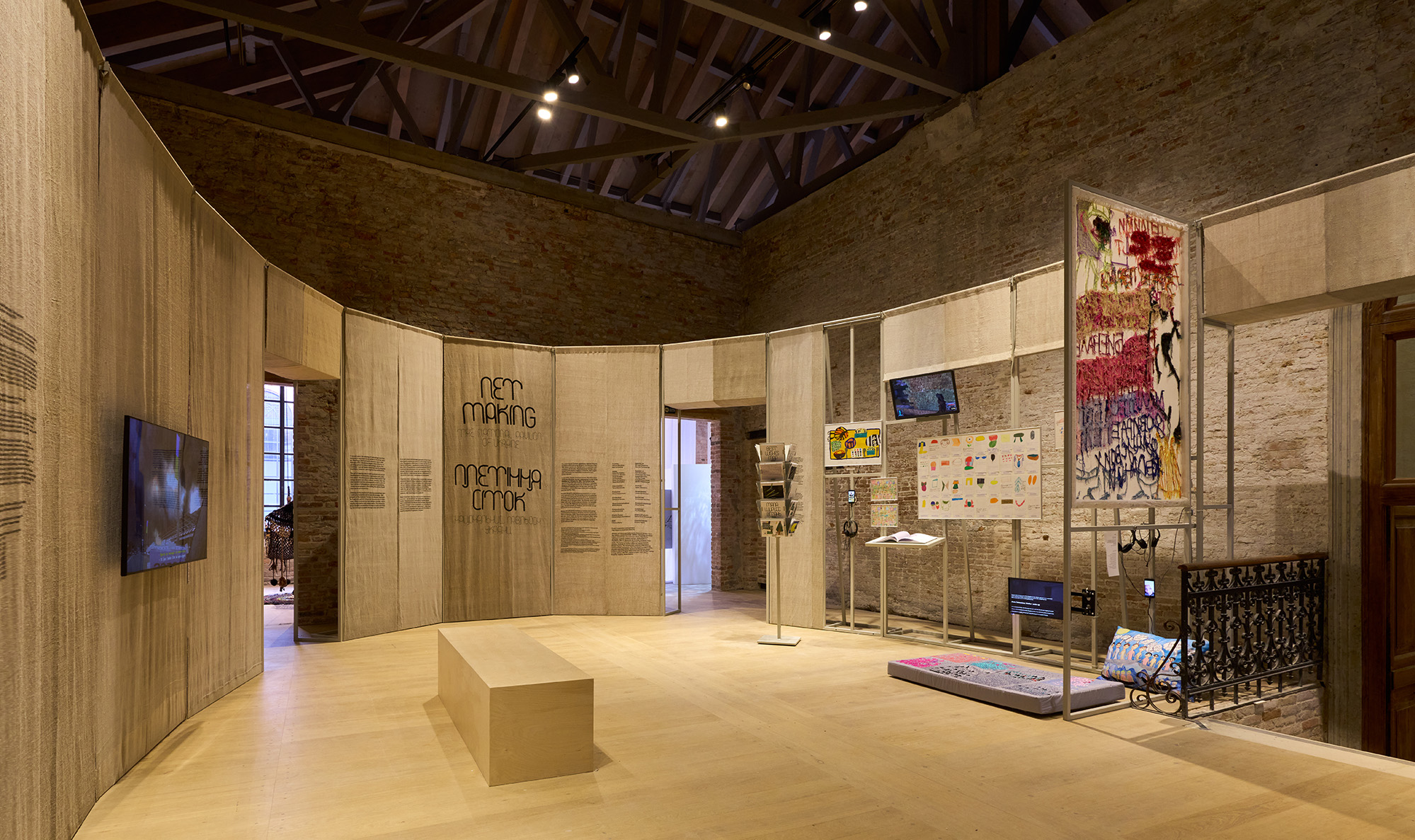
And Max, if you could talk a little bit about one of the films that’s a part of the show called Civilians, which is described as a horror encyclopedia of the invasion. I was wondering, as curators, were you struggling with this idea of, when you were coming up with the concept of the whole show, how much do you lean into the obvious using of the war itself as fodder for, as material for the show, versus trying to also just show a completely humanistic and a peaceful, a positive thing versus a negative thing? And how did you guys balance these two things?
MG: We didn’t have this choice, right? Because we thought this is the case actually for the civilians’ invasion, that it has so many aspects to it. So you couldn’t say it’s only an encyclopedia of horror. There are also some very funny moments in it. There are terrifying moments in it, but these are all direct and immediate witnessing of the events. And we thought we might go with this exactly because of it, because maybe in times of war we need to question, again, the representative functions of art and artistic creations.
So going with this film, which is basically a creation of real people, thousands of people who just recorded the ordinary life, I think we didn’t have this question because it wasn’t something staged or overdramatized and something artificial, but instead it’s just a real thing, so we basically shown it in the pavilion. And it’s some sort of a statement, that if someone will be scared, sorry for this, but it also would be normal. If someone will be laughing, it’d be great. But we didn’t censor it. And at the same time we didn’t alter it. Even the artists, they put it together as a film. So, it’s really interesting to watch because it has this internal dramaturgy in it, so it just keeps your attention. But at the same time, these are just real pieces of footage.
Another project in the show is called Best Wishes, which is quite beautiful, and it’s a project around neurodivergent artists in Ukraine. And tell me a little bit about why you chose this project, and why you feel it resonates with this idea of net making?
VB: So, we started to spoke with Katya Buchatskaya, the main artist, the main mediator of this group project. And we went to Katya with this idea of net making and of a socially engaged project that we want to show in the pavilion. And Katya came up with this idea to work with neurodiverse artists because this is her practice, I think last seven, eight years. So last this period, she has been working with neurodiverse artists in different workshops. And I think they had these workshops in Kiev, but then the full invasion started and they started to just make some Zoom calls with different participants just to talk, to have a nice time, to maybe have some like therapeutical talking, because for everyone needs someone at that time and it was better to be in a group and to share feelings and emotions with others.
And then Katya had a thought that maybe these Zoom calls and this online conversations could be continued in real life and maybe they could create some project. So, I think we found each other because we talked with Katya about our idea, and she already had this idea about to create something with neurodiverse people. So, we started thinking how it could works. We start to talk about wishes and greetings, like habit and practice that we’re all used to. But for neurodiverse people, this is practice really handy. Maybe because they use this practice to maybe to understand better some social rules, some social habits, patterns. And Katya was exploring and then say at that time how this really regular practice was transforming in the terms of war, in terms of some really difficult times.
How did it transform?
VB: Like really simple example in Ukraine, in every country we wish something have a great day, or have a great evening, or so on. But in Ukraine it’s doesn’t work now. And in Ukraine we’re now saying have a calm night, a silent night, or something like that. So your night will be great if you will have no missiles and no rockets near your building or your home. So, it’s this common sense really transformed in Ukraine now. And this project mostly about it, how is the language transforming.
And I think one of the best thing about this project that it’s really direct, and in some way it’s really simple because you could read these wishes in postcards and they did some books, handmade books. And this is really direct wishes. And it’s not a metaphor, it’s not something like artsy, really complicated. It’s like it is what it is. And I think it’s really great because it’s like a real life, real people, their real feelings. And that’s why I think this project really in some way even overwhelming because it’s so real. And I think it’s great that we could show it in the pavilion now.
And speaking of that, I mean, you guys, obviously you’re living in Liverpool now in the UK, do you feel settled there? Do you think, hopefully with the war, God willing coming to an end on the right side, that you guys would return to Ukraine? How do you guys feel right now just on the day to day in Liverpool?
VB: It’s a hard question. For me, it’s a little bit easier because I’m visiting Ukraine from time to time because my old family are still in Kharkiv, so I try to visit them every four, six months, something like that. But you never know because, for instance, I had a plan to visit them in July or June, but situation now is so horrible, so maybe I will postpone my journey. But I don’t know, it’s really hard to stay here and enjoy all possibilities and all this calm life while everything is going on in Ukraine, because of course we have a lot of friends in Ukraine, relatives. And so, it’s really a frustrating situation because you’re at the same time here and there trying to balance between these two things.
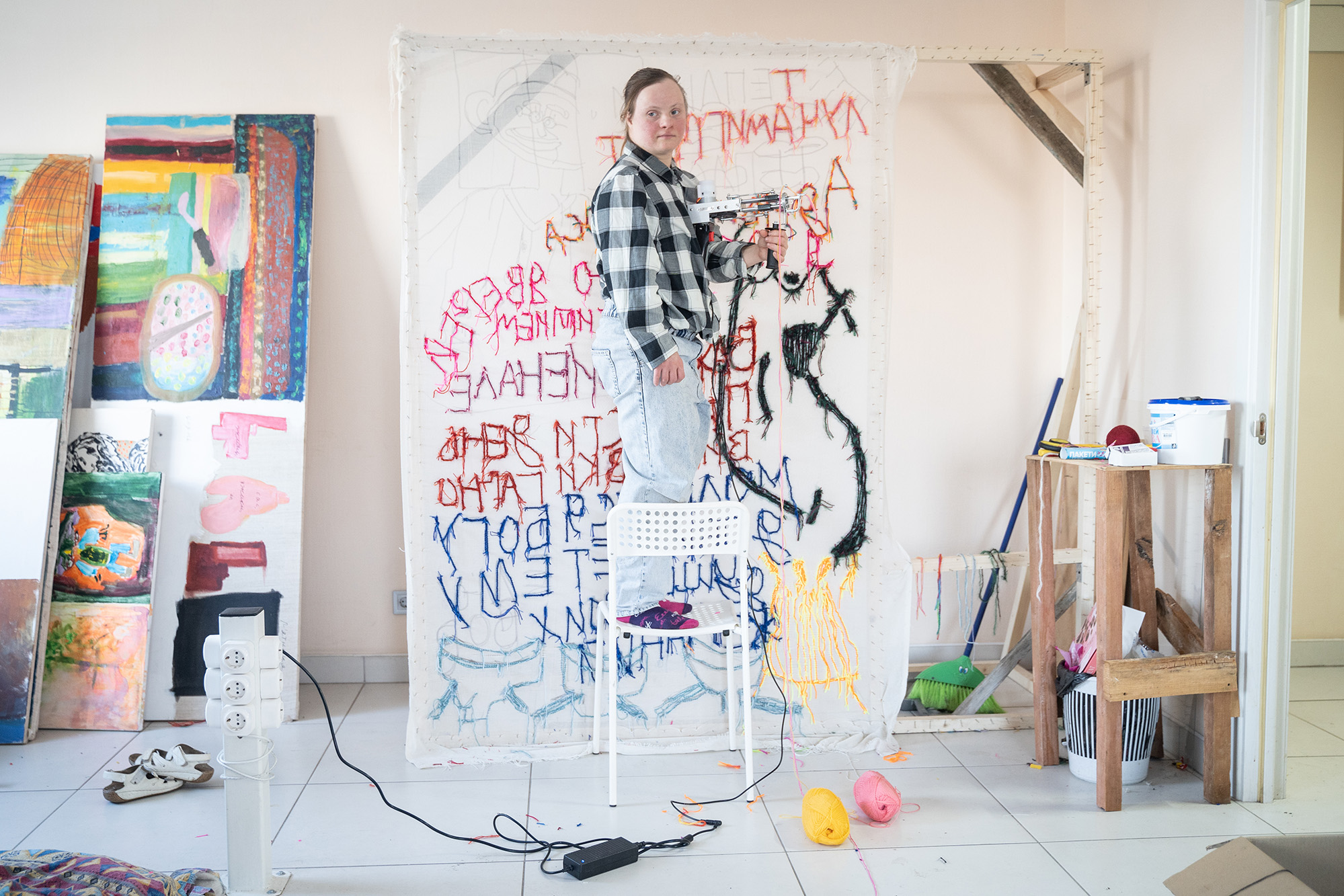
And Max, as a curator, what is your wish for sort of the cultural life of Ukraine in the future when you might one day return? What is your, a vision for our country, which is trying to struggle for its independence and its identity, essentially?
MG: I think my wish would be to not the cultural life at something ephemeral and general, but maybe to people who make part of this cultural life, the artists, curators, historians, technicians, designers, architects, everyone. So, I wish them all to be safe, and I think this is the way for this cultural life to continue because I have zero doubts or questions about the Ukrainian cultural identity and the potential, because I think it’s becoming even stronger, more vibrant Ukrainian art. And we had the chance to see it, how it has been changing, but it hasn’t stopped. The cultural institutions work, the galleries work, the exhibitions being opened. Some people of course depends on their personalities. Someone cannot work in these circumstances, but others become even more productive.
But in order for all of this to continue existence, everyone has to be safe, so it’s the only wish, actually. And I think they understand the all international community can help with this, because you can use art to maybe raise questions and challenge things, but some questions are being decided really on the battlefield and with the hardware, not the software. So it’s not something theoretical, it’s really pragmatic and real.
(MUSICAL BREAK)
Next up, I speak with Sasha Topolnitskaya, one of the curators of the summer exhibition, Constructing Hope Ukraine at New York Center for Architecture. The show brought together a wide variety of decentralized reconstruction projects from modular furniture and grassroots efforts to replace glass windows, to documenting memories and spaces. To my personal favorite, something called Rave Toloka, which we’ll get into. I caught up with Sasha from her home stateside to discuss this important show.
Well, thank you so much for doing this. I really appreciate you taking the time. Tell me a little bit about this exhibition and how it came about.
Sasha Topolnitskaya: So, the exhibition, it’s worth mentioning, I am a co-curator of the Constructing Hope Ukraine, together with another two curators, Ashley Bigham and Betty Roytburd, and the exhibition is currently on view at the Center for Architecture in New York City. The exhibition includes a work of resilience, imaginations, and inventiveness on the part of the contributors that are on the exhibition in response to the ongoing invasion of Ukraine, as you know. The work mostly showcases how architecture skills can serve as a tool to direct outrage and grief into the effective action. And it mostly concentrates around grassroots organizations and how they respond to the immediate and long-term needs of their communities at the moment, as the innovation is still ongoing.
How did you get personally involved with it?
ST: So I am American-Ukrainian designer, I lived here for 20 years but I was born and raised in Kiev, Ukraine. When the invasion started on February of 2022 as an architectural designer and as a Ukrainian, I have been following a lot of the contributors in our exhibition and their work, either through Instagram and other social medias, as they’ve been doing their work and trying to spread awareness about what is happening in Ukraine, as well as bring funds in order to be able to do their work because a lot of them are volunteer organization or started as volunteer organizations.
So, throughout two years and, respectively, the other two co-creators have also have friends, have been also looking at different project. Ashley Bigham has been always in good relationship, friendship and professional relationship with Kharkiv School of Architecture, which is currently exhibited in our exhibition. And Betty has been friends with couple of the contributors, and I have been also following some of the contributors.
So, we collected all of that work and decided to showcase it to the American community, since there has not been much conversation about Ukrainian reconstruction in United States. There have been a lot of conversations in Europe, there have been some exhibitions, but in United States there have been none until now. So, architecture community really knew nothing or very little about what is currently happening in Ukraine, that there’s actually actively a lot of projects that are happening.
In relationship to the exhibition, we also believe that the work that we’re exhibiting resonates beyond Ukrainian context and we hope it will engage in interdisciplinary and global audiences.
A lot of the projects in the exhibition are, they’re really active, ongoing efforts. You’re documenting them in the middle of their work. Nothing is being done necessarily in the past tense. And instead of something that’s more forward-looking, there’s no part of the exhibition of someone saying, “Oh, here’s the Ukraine of the future with flying cars and parks on rooftops,” and things like that. Was that a conscious choice when you guys sat down to be like, “What is needed here, what is best serving,” to root it in the here and now, rather than … in the immediacy of everything, rather than making it something more hopeful or forward-looking.
ST: The answer to this question is, there’s few answers. One is space constraints, and I will elaborate on that. Through our research, there were projects that we started with, but also as we start curating this exhibition and talking to more and more people, we have discovered probably five times more projects than we started with. So at first we were worried that we don’t have enough project to fill in the Center for Architecture space that we were given generously. Then we were actually had to figure it out, how do we cut some project off unfortunately.
One of the decisions was trying to keep them in the theme, the theme of a grassroot organization and the immediate response. It was an intentional choice. We believe that hope for people can be built in many various ways, but I think considering that the invasion is still ongoing and rebuilding society and communities is a priority right now, a lot of things are still unpredictable or/and they’re developing very quickly.
There is interest from large organizations, international organization in Ukraine, which is great, but it is also important to make sure that we are not forgetting working from the start, from kind of the ground, and involving people and community and citizens of Ukraine into response of these projects. Because while at least some of these project might seem temporarily, I mean, very often temporary housing ends up being permanent housing for a very long time.
So working together, as I was mentioning, CO-HATY project with the citizen, it’s not really, really permanent. It is for some people it’s going to be a model possibly for a long-term reconstruction.
Just tell me a little bit about this emotional component and Rave Toloka.
ST: Yeah, I think that there’s a lot of emotions in every single project in our exhibition, for the given reason. Toloka is interesting in this way because it’s uniting tradition together with this new generation. A lot of the volunteers who are working on the Rave Toloka projects, they are young, young professionals, creatives, who are just want to … first of all, they want to help people in the small villages. But also there are a lot of folks who actually grew up in the cities and never actually been in the villages or had a grandma or grandpa experience, which it’s a big, big part of the Ukrainian culture.
So there is an emotional experience in the way that they’re helping each other because a lot of these peoples in this de-occupy Chernigov region that been left with the destruction after the Russian occupation, they are not only left with the destruction, but they also felt like they’ve been left because a lot of the help, mutual help, was not making it to these little cities and they just don’t have enough equipment to clear out the rubble or don’t have enough manpower. So the young folks that are coming from these cities, they’re not only clearing the rubble, they’re constantly interacting with the local older generations and learning all of the traditions about Ukraine.
But also what they do, these young folks, they also show these people that they are not left or forgotten, as often it might feel during the war because you just can’t cover the entire territory. Ukraine is quite big and the amount of destruction has also been very large. So what these creatives are showing is that, “We are here, we are helping, and you are not forgotten.”
By that what’s interesting is that there is a constant also exchange of knowledge. The exchange of knowledge happens through the older generations or locals teaching them how to rebuild houses, because for example, they might be too old or physically … there’s just not enough people. And they teach these young professionals basically how to rebuild their traditional homes, while also getting this new experience of these city folks who just showed up out of nowhere and are trying to help.
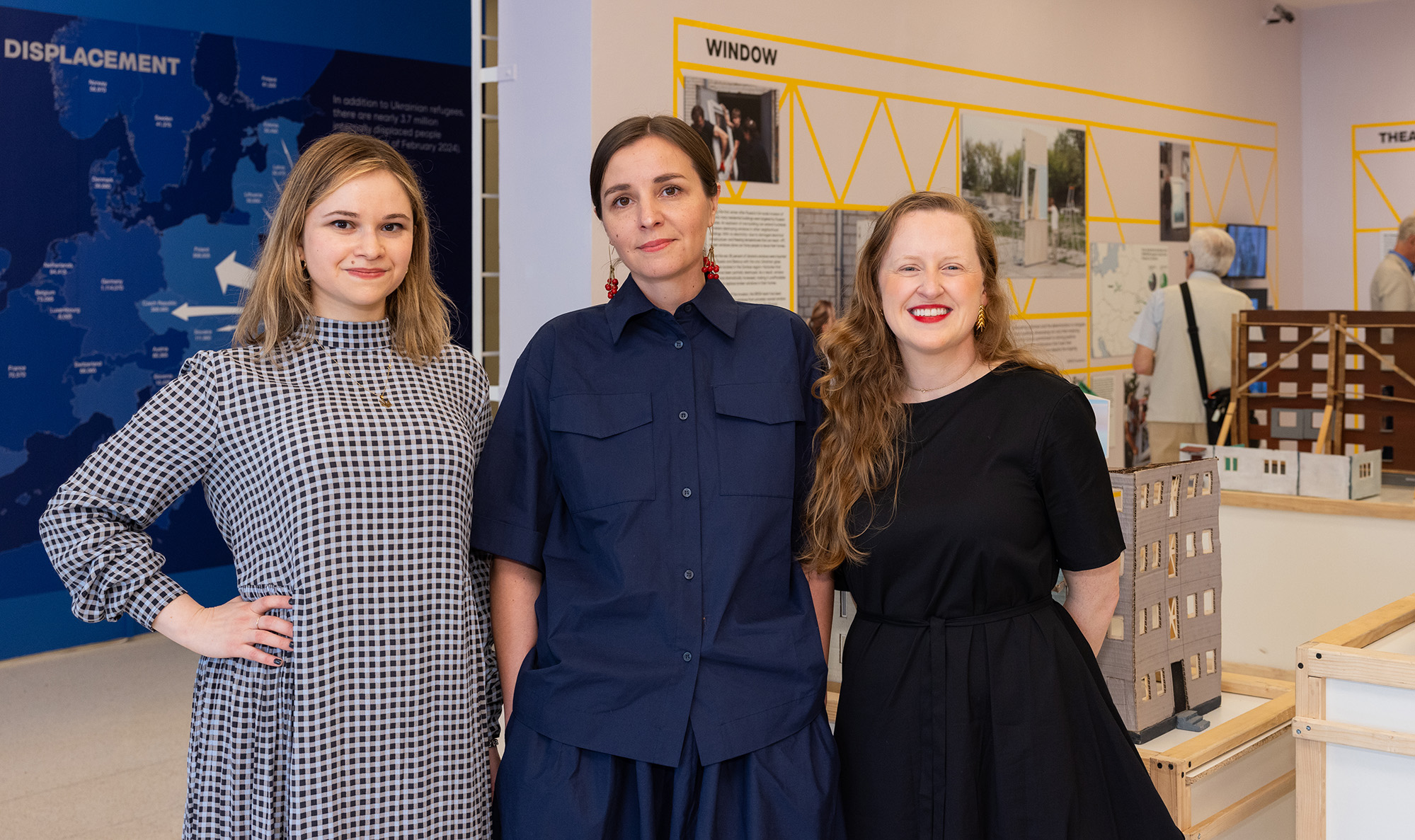
Some of these organizers are coming in and they’re like, while people are doing the backbreaking work of clearing rubble, let’s say in a destroyed house, they’re putting on a rave. They’re essentially doing with DJ sets and making it a positive, social fun experience. Correct?
ST: Yeah. There’s a lot happening there and it’s actually quite amazing. I can’t wait to go visit one of these events, but there’s one aspect is the rave parties, that the intention of the rave parties is clearing out debris and doing physical work, it’s a lot. It’s a lot to ask a volunteer to do whole day and do the next day and the next day.
So in order to keep people coming and also in order to make them feel like a community, the repair together, they start bringing sets, DJ sets to play during the debris clear out. That kind of became a big thing in a way that it became not only just DJ sets every night now, they have parties, they have music concerts where different Ukrainian artists come. Very famous Ukrainian artists have made their way to these Tolokas in order to sing or perform, comedians, to perform for the volunteers who have been working all day
And what is a Toloka exactly?
ST: Toloko, actually it is a traditional word and a traditional action, a common action, which involves people gathering and working together to address urgent community needs.
Back in the days when there was no architects, how would the city or a small town or a village would build a new house? For example, my daughter got married, I need a new home. They would usually ask a village to come and help them. And as part of the tradition, the host or the person who’s asking for their home to be built, they would at night host parties or feed their guests, together with hosting these music events or dancing, which is basically what Repair Together is doing with the Rave Toloka, so it’s-
So they’re taking this idea and they’re bringing it into the 21st century with some dance music and comedians or whatever.
ST: Yes. Yes, by that educating a larger community of Ukrainians and international community about our traditions that maybe got lost and have not been spoken to. So there’s a lot happening in that project and it’s actually quite fantastic.
There’s also an amazing, interesting, I think deserves its own exhibition, is the exchange of knowledge that is happening between the two generations and people who know the construction techniques and younger folks who are rebuilding houses. So a lot of the knowledge about traditional architecture in these small villages and towns doesn’t live in books, it really lives in the minds of the people who live there. Now these young folks are getting an opportunity to learn from people, local people, what the traditional architecture of their towns and villages well.
And when this war is over and everything God willing works out, do you think you’ll return to Kyiv?
ST: Yes, I probably, even if the war is-
Ongoing.
ST: We’ve really hope that war is going to be over soon, anytime soon. But even if it’s not, I am planning to go back home. One of our contributors, Betty, just went there for two months so she just came back. A lot of people are traveling back home to show support, to see the ongoing efforts to help in any way they can. So I definitely want to go back home.
What do you miss about home?
ST: I miss home. I think more than ever I miss a home than I think I missed before. Again, I lived here for 20 years, and maybe at some point I start thinking that United States is my home, but with the invasion my love to my home has gained a new value and a new life.
Because when you see that something that you love so much and is so precious is trying to be destroyed, and there were moments where you think that it might not even exist, it makes you value and love it even more and wants to talk about it even more. And spread the word about how beautiful our Ukraine is, how great the people are, how strong we are, and how much we need to continue to contribute to the world.
(MUSICAL BREAK)
My last guests today are designers Victoria Karieva and Andrii Anisimov of the award-winning firm Between the Walls, that does everything from cafes in France to seriously sexy offices and fashion boutiques in Kyiv.
Starting a young and thriving firm is challenging just about anywhere, but doing it right after the pandemic and then dealing with a full-scale war is something else. I wanted to ask the couple how they’re coping, what design means to them as young Ukrainians, and the importance of the built environment to a country’s collective culture that pushes back against colonization and cultural erasure.
And where are you guys both calling me from today? Victoria, where are you guys?
Andrii Anisimov: Kyiv. Kyiv.
Victoria Karieva: Yeah, we’re in Kyiv.
AA: Kyiv.
Okay, Kyiv. And what is the situation there? Are you having electricity on certain times of day or is it being cycled through?
AA: Yeah, we have few hours per day of electricity. We have a plan so you can check when will you have an electricity or not. Sometimes it doesn’t work, sometimes it works. Yeah, so maybe from four to eight hours per day we have electricity.
Oh, okay. Wow. All right.
VK: Yeah. But we need to say that we are totally independent. We have generator here in office and Starlink since 2022.
AA: Yeah. So nothing will disturb us during this call. Yeah, but.
Good. But you guys are … are you able to work?
AA: We are.
VK: Sure.
Okay, awesome. Amazing. And so tell me a little bit about yourselves, putting work aside for a moment. Victoria, where are you from originally?
VK: I am from Brovary, that’s close to Kyiv. That’s a small city, but yeah, from Brovary.
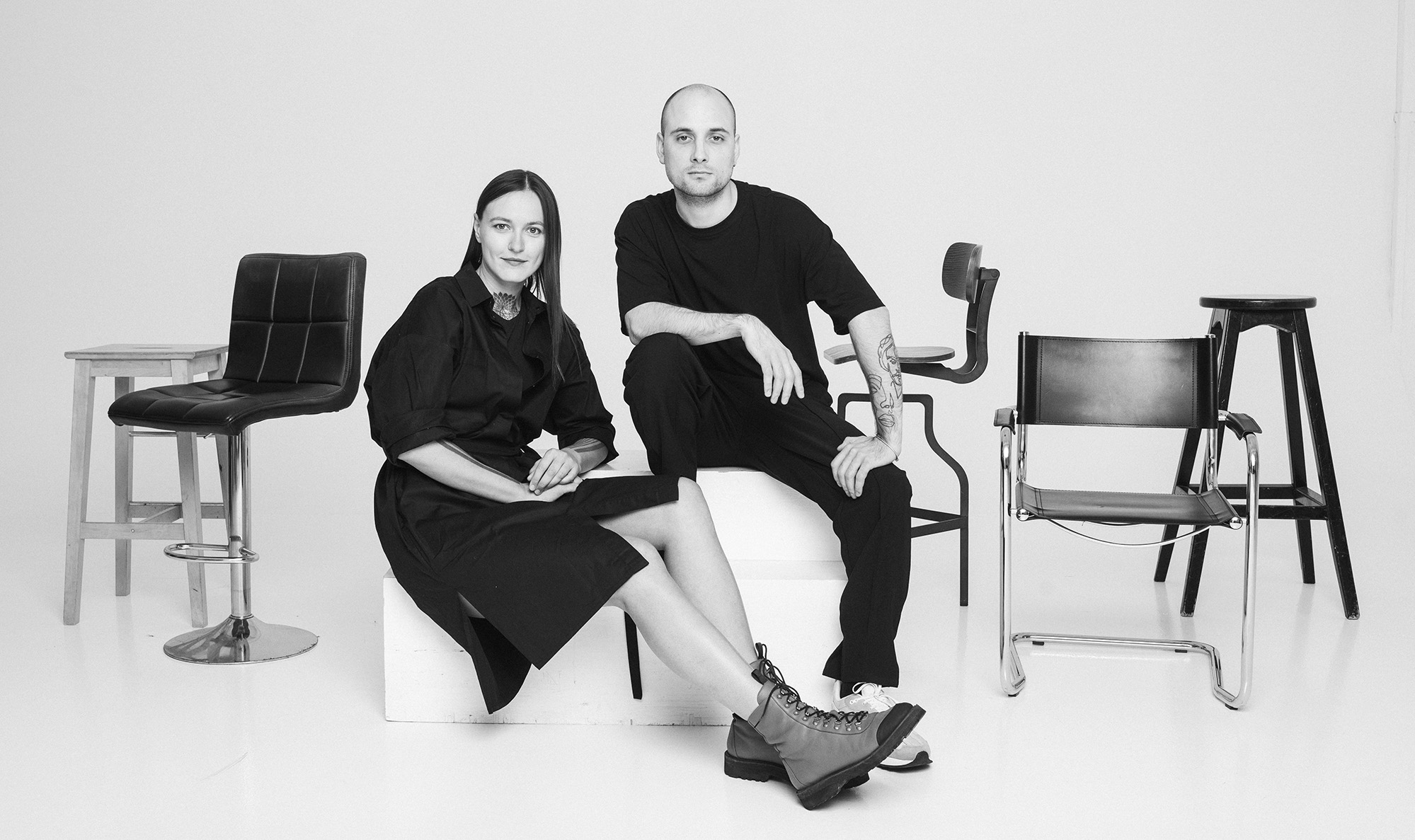
Okay. And what was your upbringing like? How did you get started into design?
VK: I knew from the very beginning when I was a child that I have two strong sides of my personality, which is creativity and math. So I decided that interior design fits very good with both of them. But I need to say that my first profession was a basketball player, I was a professional basketball player. And after that I decided to be an interior designer because it was with me from the very beginning.
Andrii, what about you? Are you from the Kyiv area also?
AA: Yeah, I’m from Kyiv. I was born here. Yeah, and I’m not basketball player or any sports. I didn’t do it. I was an IT programmer. And I had some startups. And our business with Victoria is my first attempt in business. I have launched three startups previously, two failed, but the third one gave me a small profit but also closed down. Was closed down because I didn’t find a way how to scale it.
And then I met Victoria. And since I was a little bit in real estate and have had an access to target potential potential target audience, we decided to run our studio.
Okay. And how did the two of you meet?
AA: It’s quite interesting story. In 2017, yeah I think, my family decided to buy a few apartments, invest in real estate. And when we did it, we decided that we don’t know absolutely what to do the next. And someone suggested us to hire the designer and designer will help and who will be the designer. And someone is a classmate of my sister told me that his ex-friend has an ex-wife and this ex-wife is Victoria. Yeah. So we met with each other and I didn’t look for anyone later because when I met Victoria, I understand that it’s perfect match. So I was a client of Victoria. And Victoria made a few apartments for my family and then we decided to run our studio. I had access to potential clients.
Okay, amazing. And so how is your practice set up today? How would you describe what Between the Walls is? Victoria, why don’t you start with that?
VK: Almost multidisciplinary studio. We’re working with interior design, also sometimes with art. Now we’re like 13 people with us trying to get out to the international level, not only to work in Ukraine.
And Andrii. Tell me a little bit about what would you say to a new client? What is the signature Between the Walls? Why would someone work with you guys rather than someone else down the road?
AA: I think our clients choose us not only because of word of mouth that someone suggested us, but I think that new clients choose us because we don’t choose some very specific stylistic. We like to combine very uncombinable stuff, which from the first point of view, it seems like it’s uncombinable, but we like to unite some interesting things from different styles which reflect our client.
And Victoria, tell me about One by One, which is one of your recent projects. It’s like a very austere sort of fashion retail, a boutique, which is quite stunning. Tell me a little bit about that.
VK: So the idea is really great because we faced with the war and some of big brands left Ukraine for two and a half years, like H&M or Zara or something like that. That means that Ukrainian market didn’t fall down. Actually, some Ukrainian brands started to grow up. It causes also a lot of projects for us. And the main thing for one-by-one retail design is that our client wanted to make their business more with entertainment things inside to their own clients, be there for a while, make photos and make the space more Instagrammable and spread the information about the brand widely.
So they were encouraging you to be a little bit more wild, essentially?
VK: I mean, yeah, but wild but not so depressed probably through the materials and colors. And I was thinking that, yeah, probably I feel this pressure. Yeah.
Right. You’re feeling the pressure?
VK: Yeah, I’m feeling the pressure all the time actually. And it causes something with… I mean, my creativity is also goes according to that position. And I imagined that, “Well, okay, what do I really want now? During the wartime, I just want to relax and have my old life and probably I want to go to the sea, or at least to the swimming pool.” And how this idea started from this swimming pool idea. Probably people also want something light, want something more to have fun with even during the war because it’s hard to live here. And after that, they took this idea even for the marketing strategy, to use this theme of sea pool, something blue, et cetera.
And that brings up a good point. Andrii, maybe you could take this question. Looking around, not just in your work, but in the work of other Ukrainian designers that are younger, the look is very contemporary, as I would say. It’s a very sort of European colorful, very contemporary. Is that fair to say that the sort of Ukrainian design scene today is very progressive and very forward-looking?
AA: Yeah, I think for me, the Ukrainian designers, it’s like a phenomenon because we grew from… Our country is 30 years old. We was in Soviet Union and we has post-Soviet use. We grew in very hard times, but we found that passion to very beautiful things, to European design, if I can call it European design, in modern art, modern design. We don’t want to continue what was 30 years old or 20 years old. We want to progress and we want to progress even with bigger velocity than maybe developed countries. We want to have good life. We want to have good life comfortable. And that the design is what we trying to catch also.
And do you think that maybe that’s a little bit, because let’s say in Italian design, a lot of it is now backward-looking. A lot of the young designers are doing more traditional things, a lot of craft, like a lot of very, very sort of nostalgic work because they have things to look back to. But I think it sounds like from what I’m gathering, Ukrainian designers don’t want to look back because they don’t want to mimic the past that maybe they grew up with and the Russian influence. Is that right, victoria?
VK: Yeah, for sure. For sure. You know that actually the Soviet Union culture was forced to accept… They forced us to accept this culture. And actually when Soviets came to Ukrainian country, they just ruined everything, like cathedrals, architectural buildings and all the culture actually. They burned out all libraries and so on. And it means that actually… And they destroyed religion also, which is very important thing in culture. So that’s why from one hand, the good thing is that now we have a clean paper and can start a clean page and we can start to go forward with something new.
And we’re like a sponge that can take in all the information and we see it clearly, and we’re curious enough and courageous enough to try to do something new. But still, the good thing is we reinvent Ukrainian culture to Ukrainian DNA. And sometimes it was hidden in the shadow of the Soviet culture and the Russian culture because if you have one big city like Moscow or Saint Petersburg, it was almost impossible to have something great in Kiev because it was not a huge big city, not a cultural center. And now we reinvent our culture and that’s very interesting. It’s so cool. And sometimes when culture meets another culture, it just engage together and-
AA: It enhance maybe each other.
VK: Yeah, probably.
And on a basic level, how is the war effect sort of affecting your day to day? Obviously we were chatting before and you mentioned that you’ve got electricity for four hours a day, but you have a generator at work and you have Starlink so you can get internet and so on. But beyond when you leave the office and turn the lights off at the end of the day, what is that kind of day-to-day, everyday life like?
AA: I can tell you that each problem has solution for us. And we never backed down. Once the war broke out, we faced enormous amount of problems and we had an option to break down, give up. And the second option, okay, what can we do to save, first of all our country and what can we do to save our studio, our people. And our people is our greatest value. Our team is greatest value. First month we didn’t have any incomes, so we just paid salaries from our financial safety.
Pockets.
AA: Yes, financial safety bag, which we made previously because it’s very important when we launched our studio, when we started in the end of 2019, almost we faced COVID almost just from the start.
VK: We did. Yeah.
AA: Yeah. And we understood that we have to build business with understanding the next day could be absolutely another, and the next day could be not so good like this. And we created this financial safety bag for us. We didn’t spend just all money we earn. We didn’t invest all money we earn. We just keep it safe.
And Andrii, tell me a little bit about what you would like people when they listen to this episode, what would you like them to… We call it a takeaway. What would you like them to really keep in their mind and then in their soul when they stop listening to this podcast?
AA: Maybe we want people to live with Ukrainian resilience, I think that’s a part of our culture. And we want people to maybe Google what’s Ukrainian culture is, how big it is, and some Ukrainian identity. Because even now we understand that there is a lot of people who think that Ukraine is maybe a part of Soviet Union or something like that. We want people to know that Ukraine has very good and great culture and something like that and etc. And we also want people to remember us.
Victoria, what about you? What would you like people to take away from this?
VK: Even before the full scale invasion, it was a lot of collaborations even before with brands like Valentino, Gaultier. They made some motives with Ukrainian DNA. And that’s really something interesting. And if you can imagine our… Because Ukraine is like a post-colonial country in the middle of Europe, even this fact is something very interesting to figure out how it is going on there and how people survive. And also just to say probably for everyone who want to create something, who want to be interior designer or architect, to go on, to believe in themselves. Because even in a very hard situation, you can find a solution and be yourself. Stay as you are and just go forward.
Thank you to all of my guests: Max, Sasha, Andrii, and both Victorias for making this episode happen. The editor of The Grand Tourist is Stan Hall. To keep this going, don’t forget to visit our website and sign up for our newsletter, The Grand Tourist Curator at thegrandtourist.net. And follow me on Instagram at @danrubinstein. And don’t forget to follow The Grand Tourist on Apple Podcasts, Spotify, or wherever you like to listen and leave us a rating or comment. Every little bit helps. Til next time.
(END OF TRANSCRIPT)
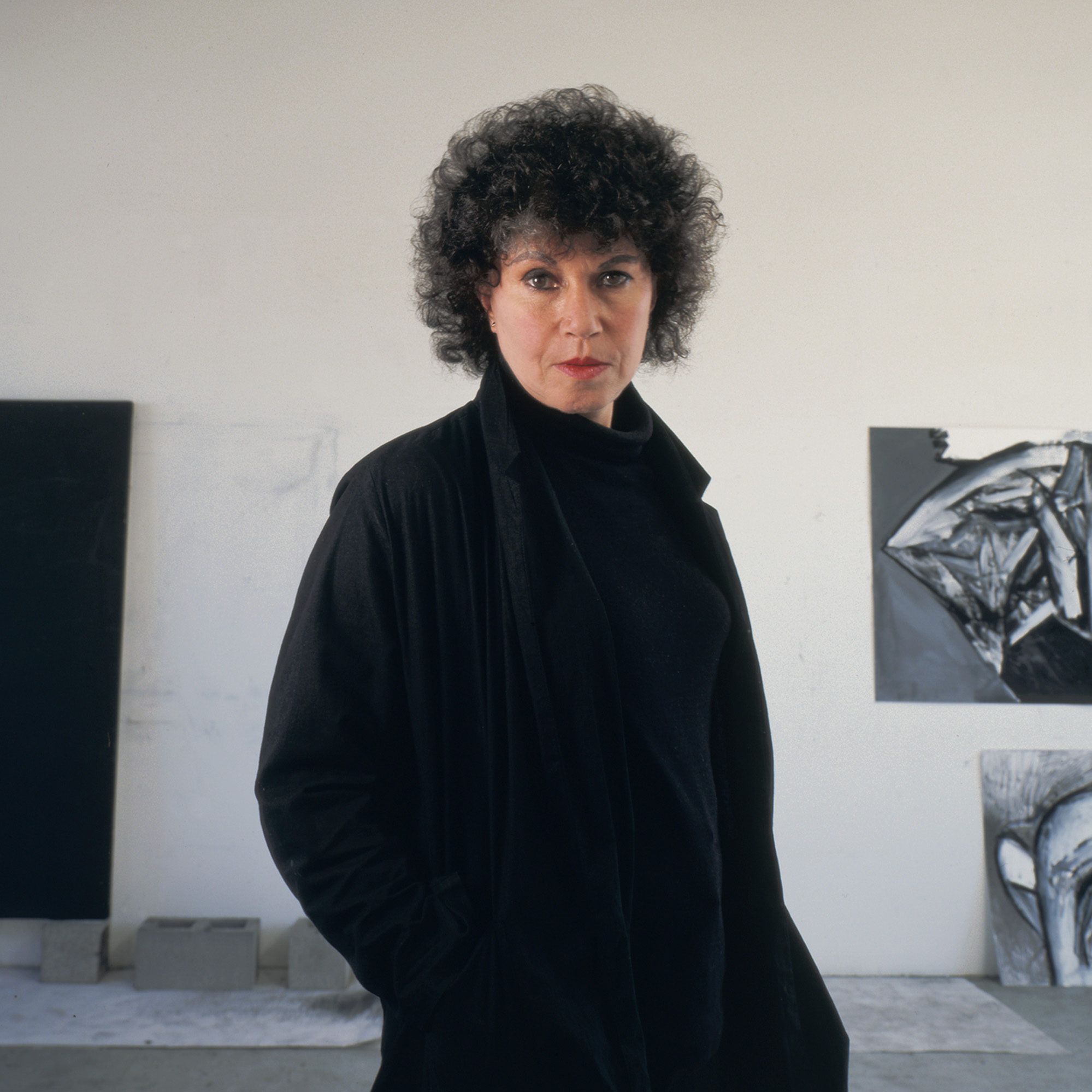
The brilliant late career of Jay DeFeo. Plus, America's forgotten painter, solitude on film, and more.
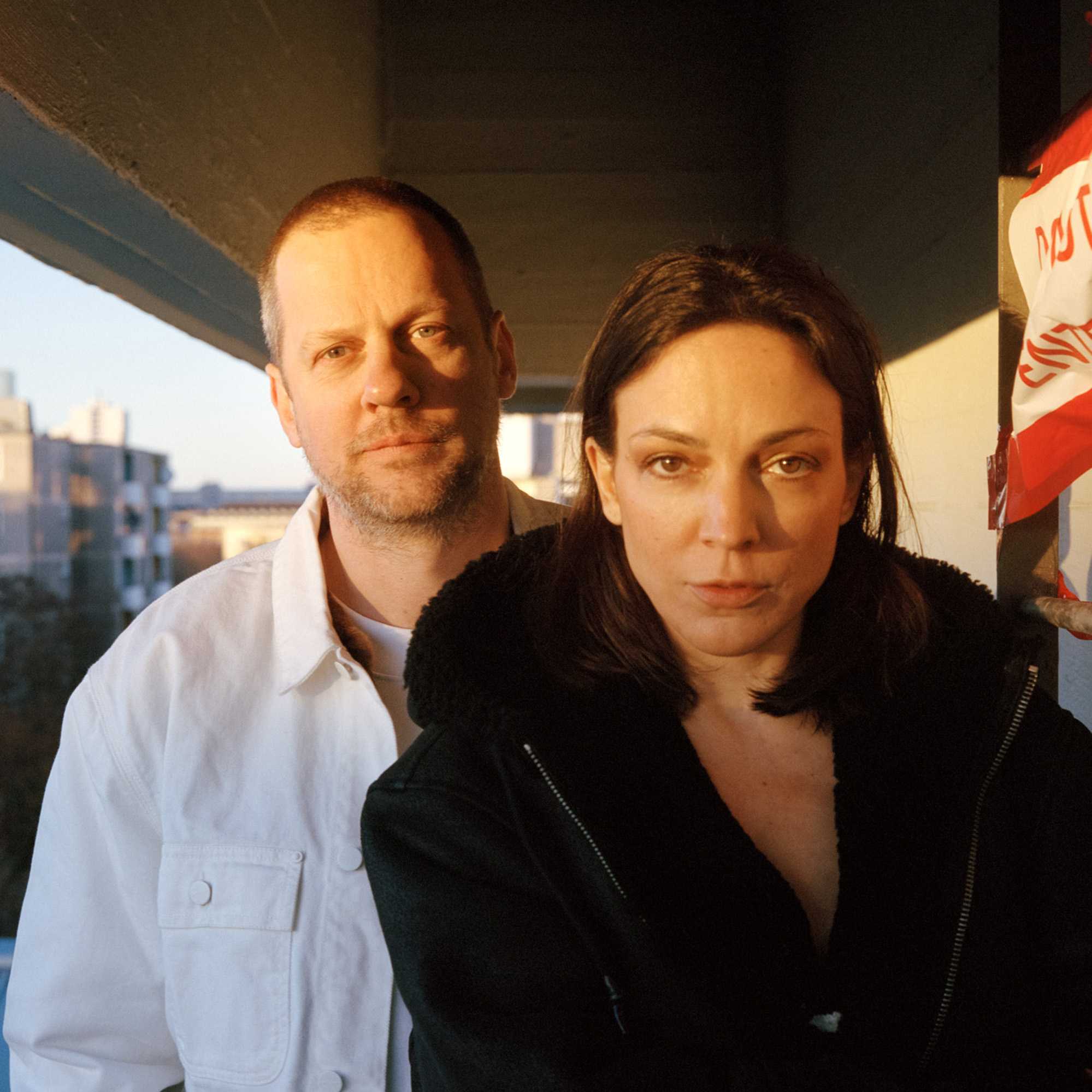
For decades, the Berlin-based fashion and culture magazine 032c set a global standard for transgressive ideas and stunning visuals that inspired leagues of creatives. On this episode, Dan speaks with the couple on how the brand evolved from publishing powerhouse to fashion line.
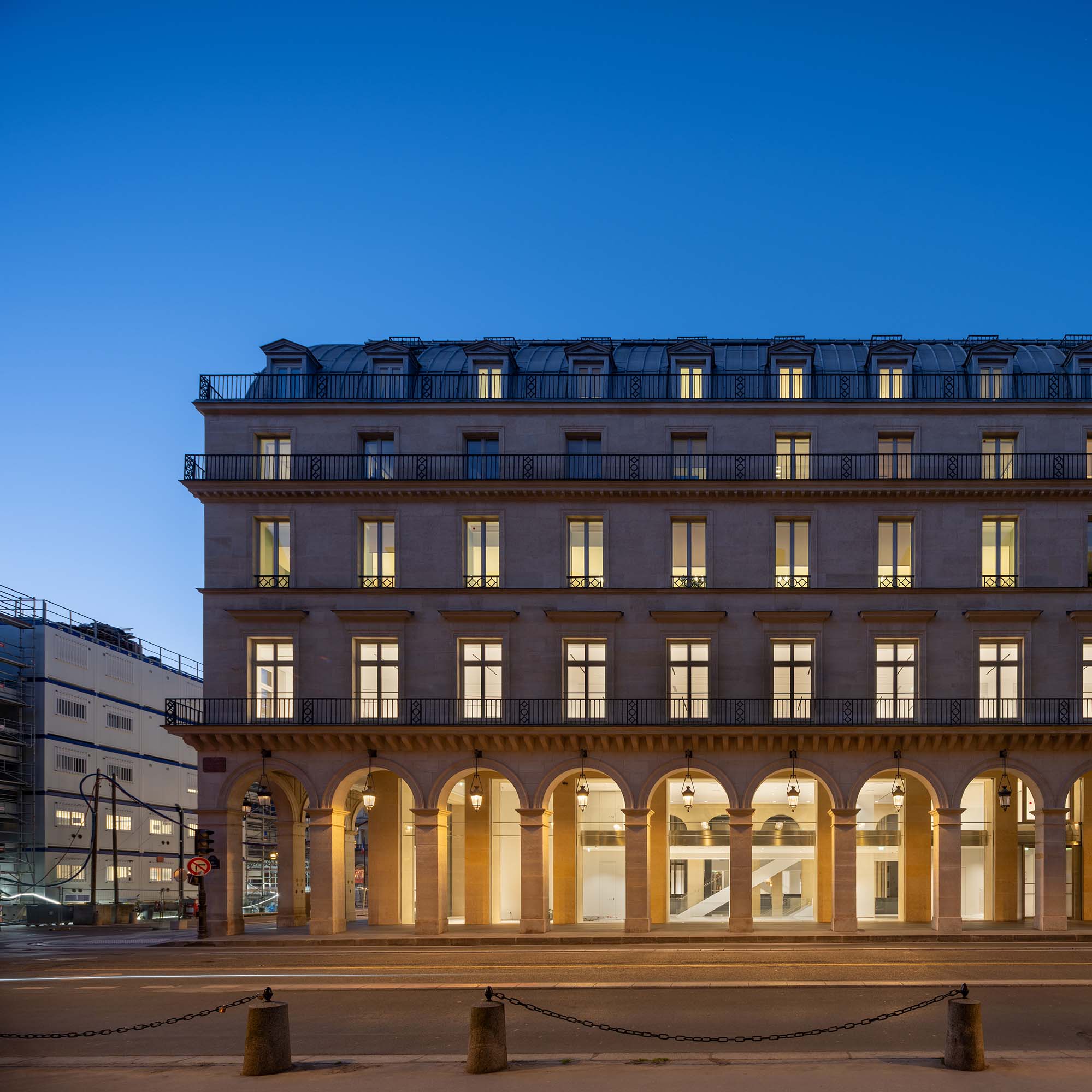
The Fondation Cartier pour l’art contemporain is moving into a new home in the very heart of Paris. Dan speaks with the Fondation's Beatrice Grenier about the incredible new museum by architect Jean Nouvel, its fascinating history, and the exciting inaugural exhibition.